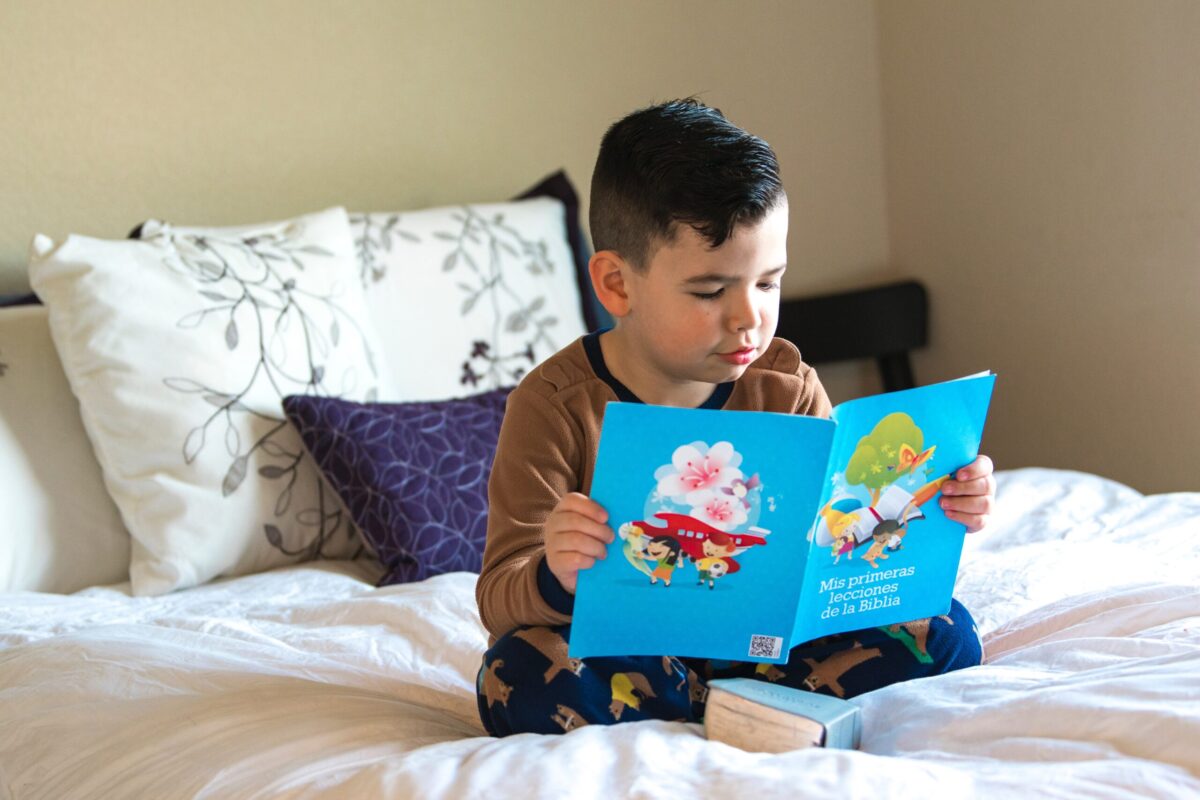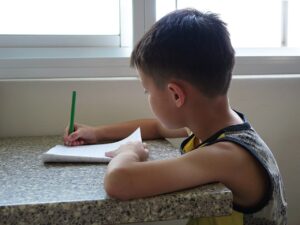Montessori Language Theory
Montessori language theory widely differs from the traditional approach to literacy. Maria Montessori didn’t simply accept the way reading and writing had always been taught. Instead, she conducted extensive research and observation of children to find the most effective way to approach early literacy.
The result? A thoughtful framework that meets each child where they are developmentally and prepares them for a lifetime of reading, writing, and learning. In this article, we’ll detail a few key differences that make Montessori language theory stand out from mainstream approaches. We’ll discuss why these differences matter and how you can apply them in your Montessori home or classroom.

How Montessori Language Theory Lays the Groundwork for Literacy
Montessori language theory differs from mainstream approaches in how it thoughtfully prepares children for literacy long before they ever pick up a pencil, movable alphabet, or reader.
This preparation isn’t about reciting the alphabet song, memorizing sight words, or flipping through notecards. Instead, the Montessori method prepares children for literacy with engaging, hands-on work that develops their minds and bodies for reading and writing.
 For example, practical life activities in a Montessori classroom are key preparation work for reading and writing. On the surface, activities like polishing a mirror, transferring objects, or arranging flowers may appear to have little to do with reading. But these activities develop many skills necessary for literacy.
For example, practical life activities in a Montessori classroom are key preparation work for reading and writing. On the surface, activities like polishing a mirror, transferring objects, or arranging flowers may appear to have little to do with reading. But these activities develop many skills necessary for literacy.
For starters, these activities engage the senses. They develop focus, which children will need when they sit down to write and read for the first time. Many of these activities also refine the tripod grasp, physically preparing their hands to eventually hold a pencil. That’s why a simple Montessori transfer work with a spoon or tongs isn’t just for fun — it helps children develop the skills necessary to one day write.
Montessori sensorial work also prepares a child for literacy. As LePort Montessori notes, materials like the knobbed cylinders also develop a child’s pincer or tripod grasp, and the rough and smooth boards prepare a child to learn letters with sandpaper letters.
The Importance of Letter Sounds
Despite what you may have learned in “The Sound of Music,” reading doesn’t actually begin with “A-B-C” — at least not in a Montessori environment. While it seems natural to start teaching children the alphabet as we know it, in alphabetic order with the letter names, Montessori offers a different way.
In Montessori, children learn sounds long before they learn letter names. This begins with sound games, in which an adult helps a child isolate the different sounds that create words. In a sound game, an adult might say, “I spy something that starts with ‘buh.’ That’s right! Book starts with ‘buh’!”
By learning letter sounds instead of letter names, children can make a more seamless transition to writing and reading. When reading the word “cat,” for example, Montessori children don’t have to work through the name of the letter and then think of what sound that letter makes. Instead, they can simply sound it out without worrying about the letter name.
Why Writing Comes Before Reading
In Montessori, writing comes before reading. This is another key difference that sets Montessori apart from traditional approaches. Since this approach isn’t the norm, it may seem confusing at first. But teaching a child to write simultaneously teaches them to read.
 As a child traces a sandpaper letter or writes their own words, either on paper or with a movable alphabet, they learn about each individual letter and the sound it represents. Writing helps a child become intimately familiar with these letters and sounds. Then, with the skills built from writing, reading comes naturally and spontaneously.
As a child traces a sandpaper letter or writes their own words, either on paper or with a movable alphabet, they learn about each individual letter and the sound it represents. Writing helps a child become intimately familiar with these letters and sounds. Then, with the skills built from writing, reading comes naturally and spontaneously.
As Grey Matter Montessori notes, this writing-first approach allows reading to become a natural, self-directed process that children can discover on their own. This makes reading a richly rewarding, engaging experience for children instead of a frustrating one.
This approach doesn’t just sound nice; it’s also backed by science. According to a Reading Rockets review of research on reading and writing, “children’s ability to read words is tied to their ability to write words in a somewhat reciprocal relationship.”
How ‘Follow the Child’ Applies to Montessori Language Theory
Just like in every aspect of Montessori, the principle to “follow the child” is key in Montessori language theory. There’s no set-in-stone timeline for children to begin writing and reading in a Montessori environment. Each child begins the process when they show interest and readiness.
Parents and guides never force children to read or write when they’d rather be doing something else. Instead, adults trust that children have a perfectly created internal syllabus that will guide their literacy journey at the perfect time for each unique child.
Adapting Montessori Language Theory for Your Family
Maria Montessori developed a few core language materials, like language miniatures, sandpaper letters, and the movable alphabet. However, since Italian is a phonetic language and English is not, English-speaking families may need additional materials or approaches to teach their children to read.
 Some Montessori teachers have developed Montessori materials like the pink, blue, and green series to fill in these gaps. However, Montessori parents should feel free to use whatever approach works best for their families.
Some Montessori teachers have developed Montessori materials like the pink, blue, and green series to fill in these gaps. However, Montessori parents should feel free to use whatever approach works best for their families.
You don’t need to do a strictly Montessori or by-the-book approach to reap the benefits of Montessori language theory. Like in all things parenting, feel free to take what works for you, leave what doesn’t, and fill in the gaps with whatever feels right for your family. You know your family best!




0 Comments